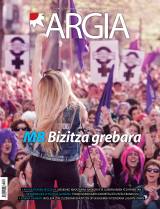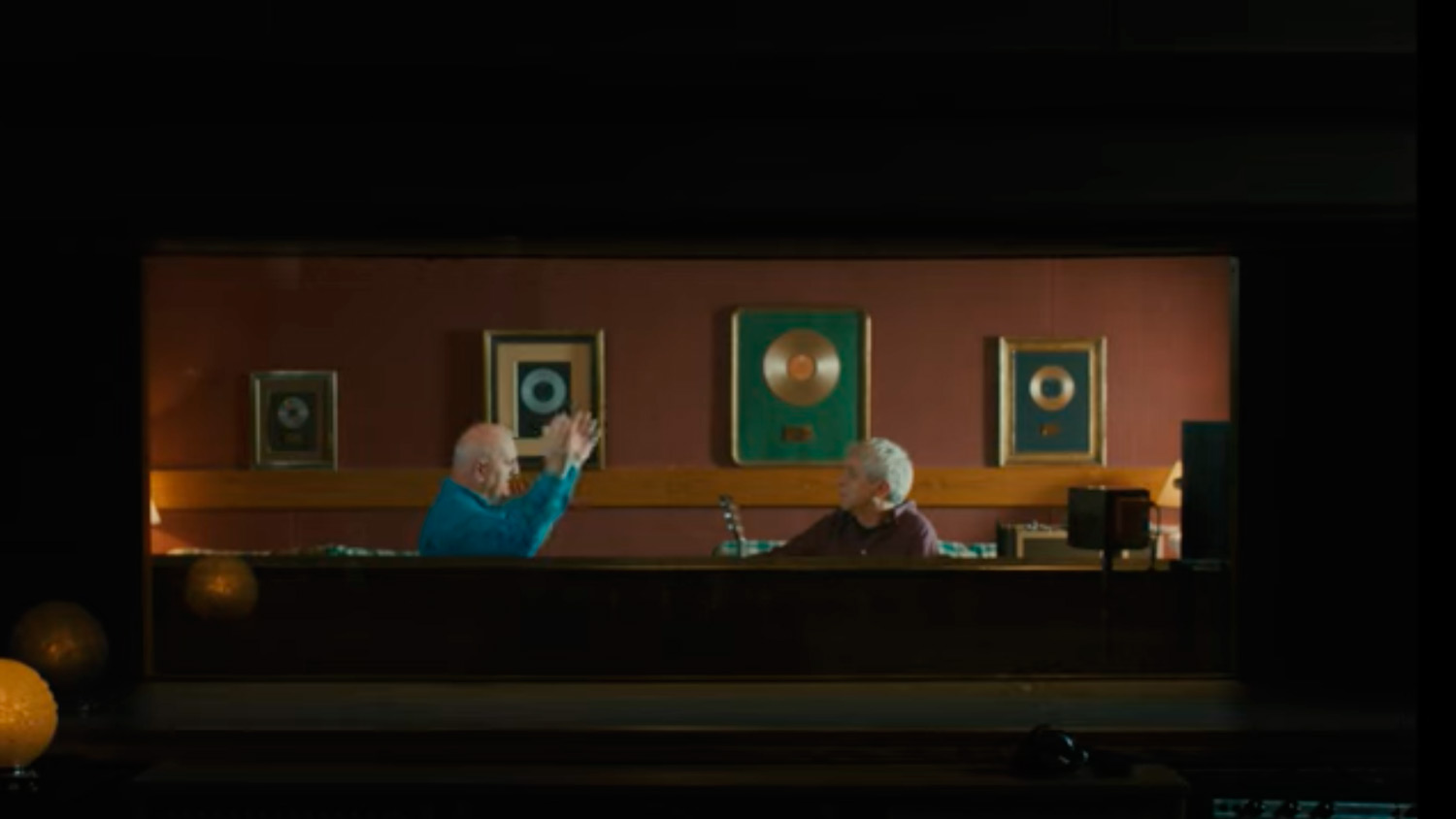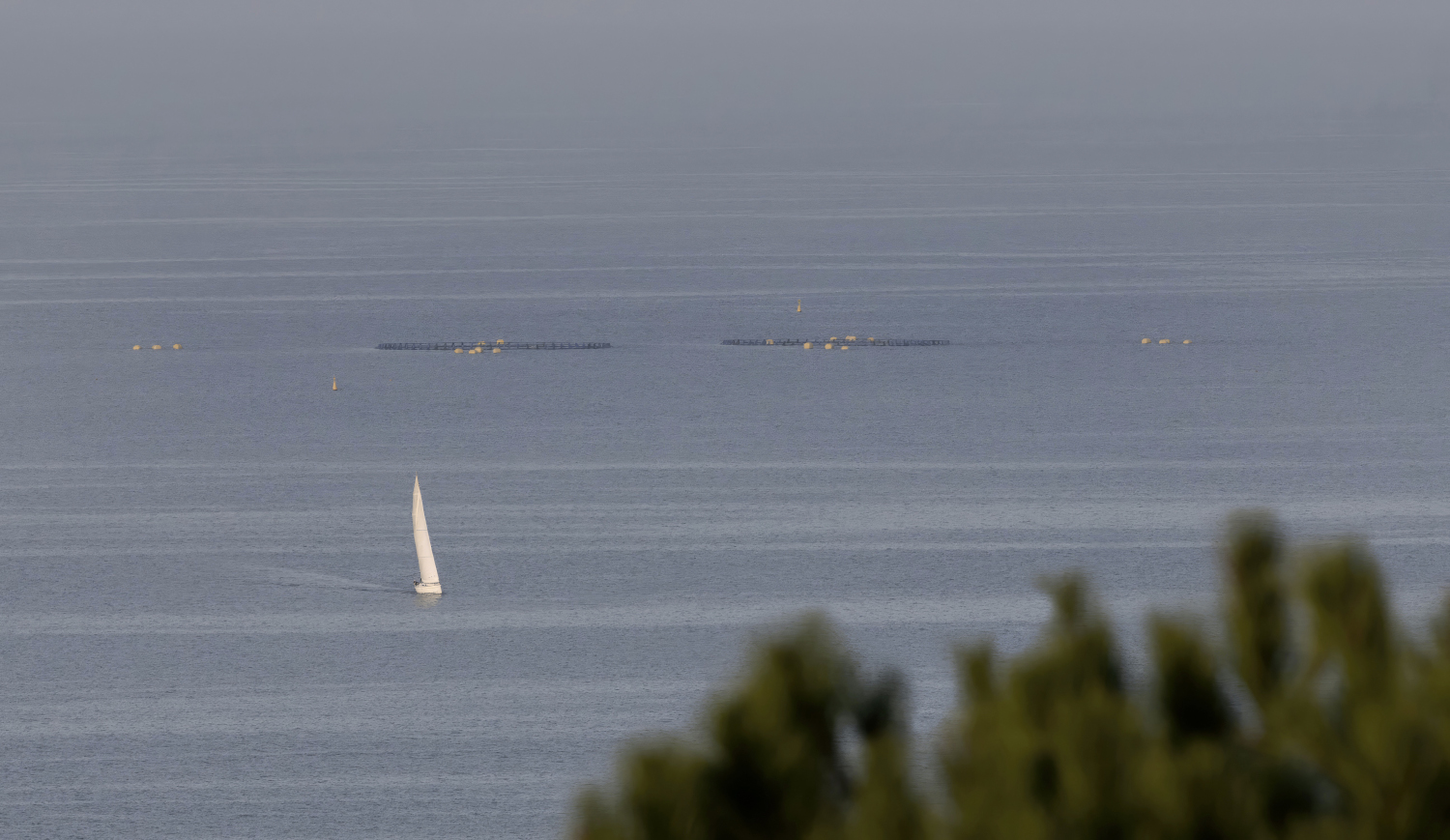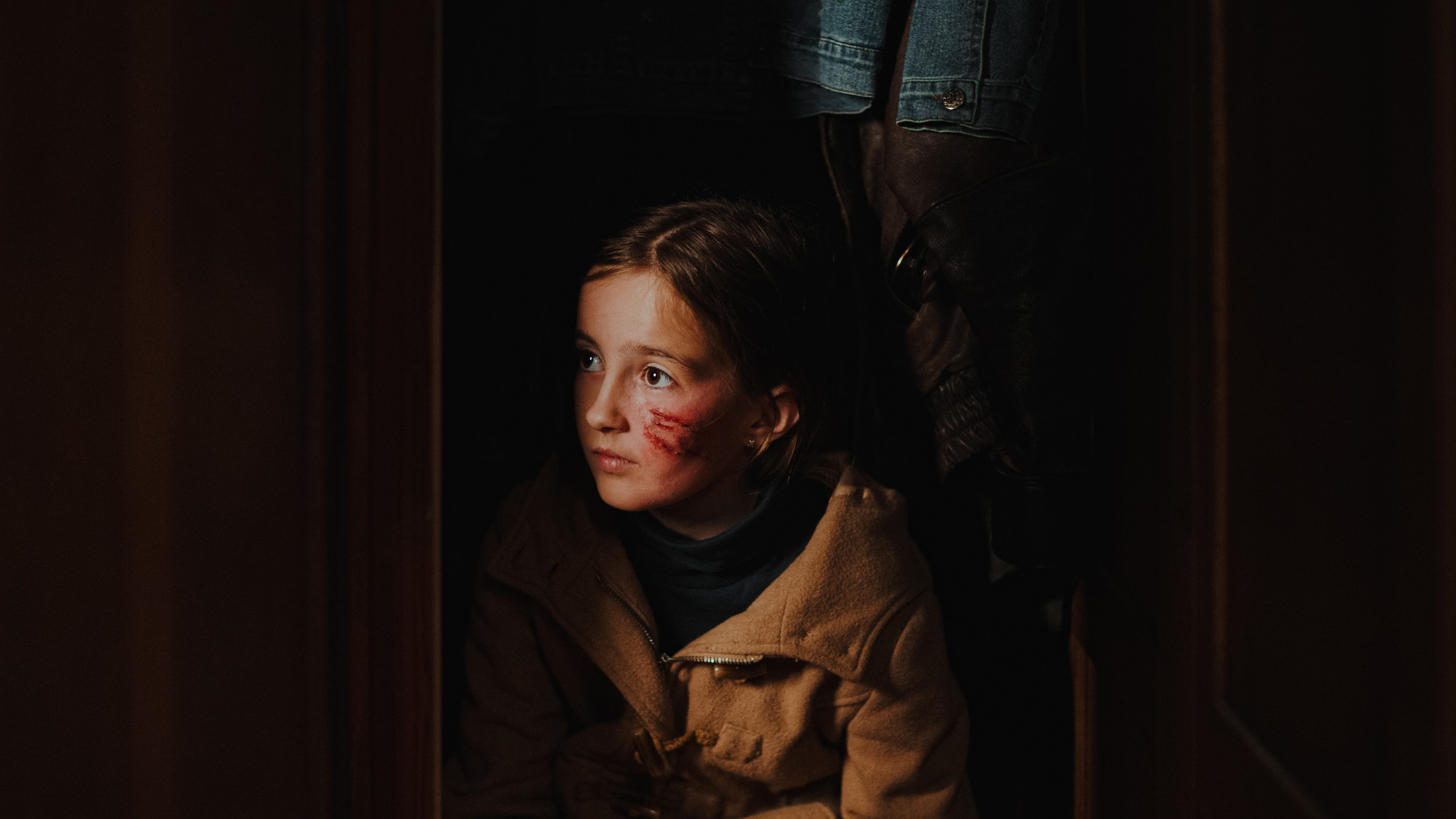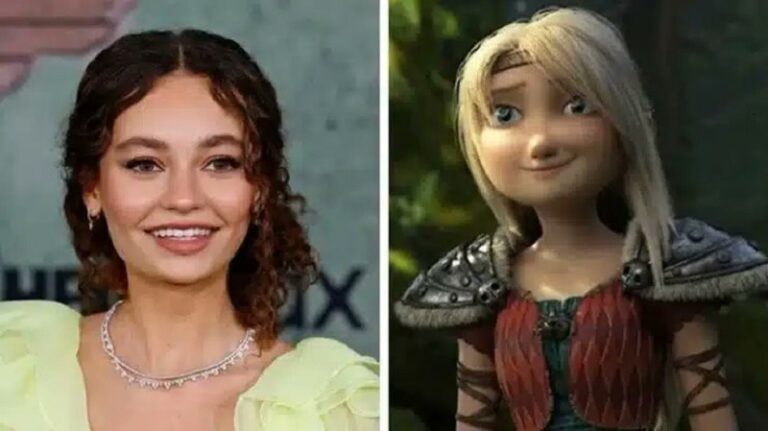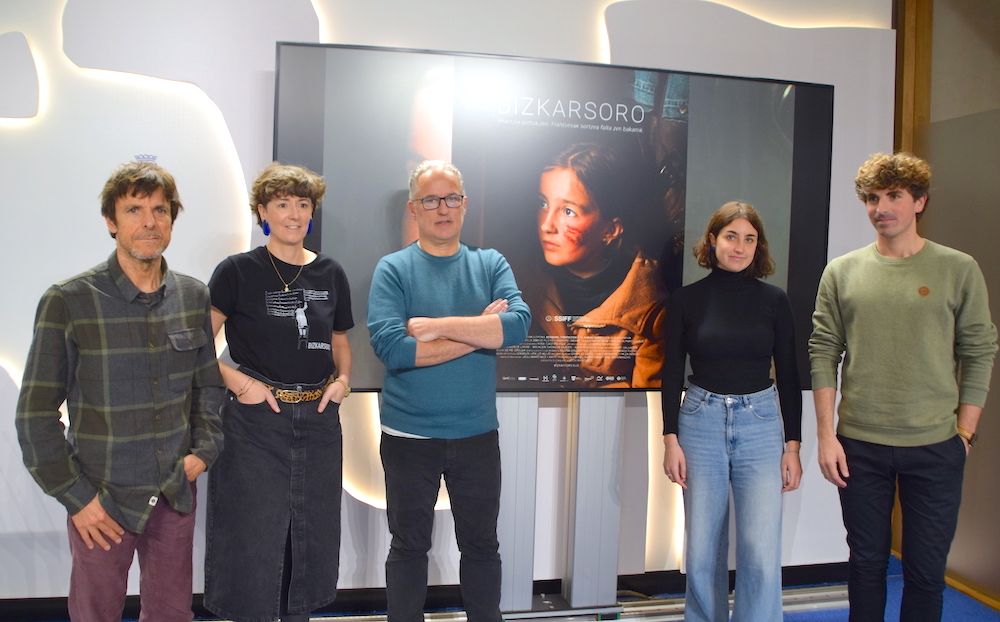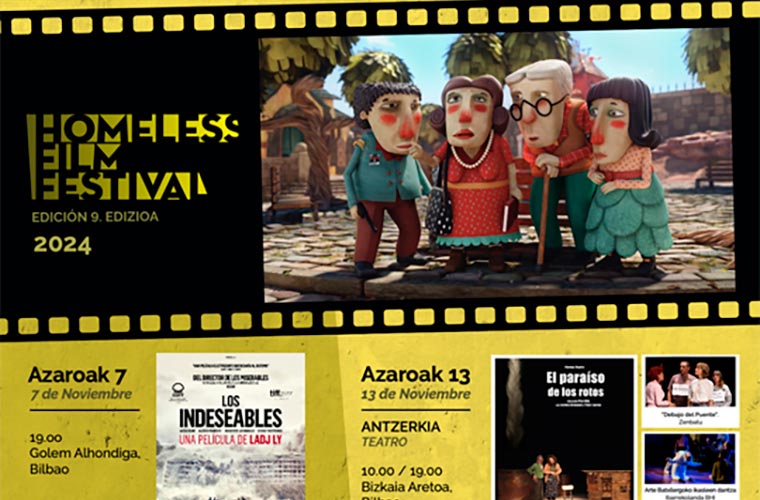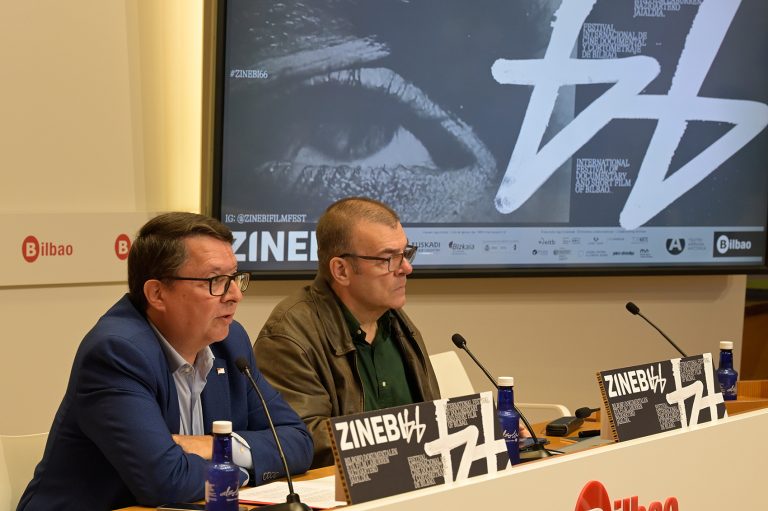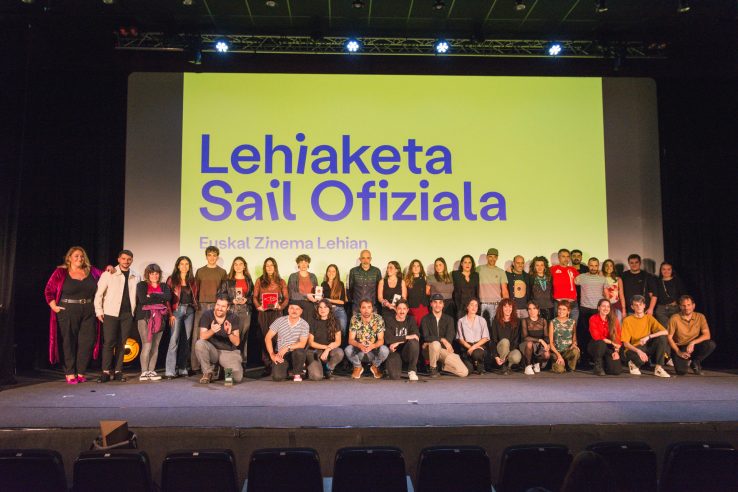Looking for the Magic Hour
- In film, as in photography, that moment between sunset and darkness is called the magic hour. Light acquires a golden color, softens and creates longer shadows. At this poetic, beautiful and mysterious moment, the world presents itself before our eyes in a different way. More present than ever. That's why we left a lot of filmmakers to look for that magical hour. For a passion. And it's that, in that moment, the power of film increases. We refer to the capacity of cinema to generate knowledge, reflection, emotion, amazement and questions towards oneself, others and the world.
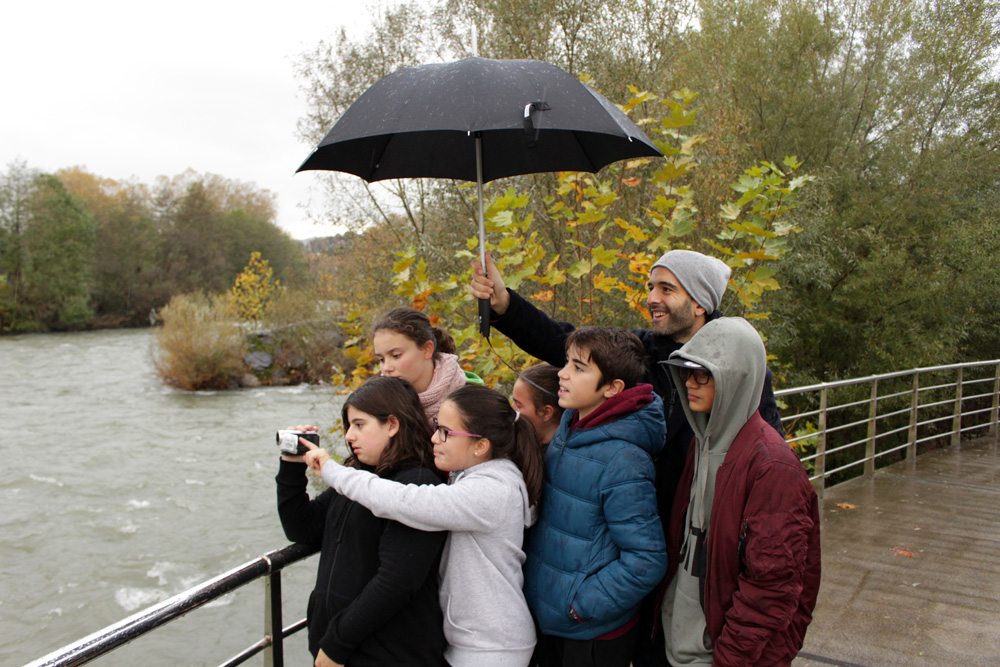
Autumn. A student of Oriarte BHI from Lasarte-Oria moves in a car guided by his father. He's twelve years old. They're around seven o'clock in the afternoon, and all of a sudden, he asks his father for a cell phone. He'll tell him to walk away. The programme will also be fixed in the sky and will be travelling with the camera in its hands. It must be at that time. There and in that moment. He feels the desire to roll that moment. No doubt, this student is a filmmaker because he looks at the world with the filmmaker's gaze. One of the most important fruits of the Cinema en curs initiative, created by Núria Aidelman and Laia Colell, gives this young man's first days of life. In fact, the transmission of cinema from the heart of creation is the foundation of the project. As pointed out by Alain Bergala, his referent in his treatise L’hypothèse cinéma, “to transmit the keys of cinema, we have to be at the heart of those decisions”.
There are still movies that are hard to find, to get and to see. It's important that
students also watch this kind of movie.
Cinema en curs, Aidelman and Colell, of the association A Bao A Qu, launched the initiative in Catalonia twelve years ago. After being extended to several territories, this course has reached the Basque Country. Cinema (h)abian by Tabakalera and Elias Querejeta Zine Eskola. All of us together start together and we're learning from this first experience. Professors Amaia Beguiristain and Aitor Olano, colleagues from Tabakalera and Elias Querejeta Zine Eskola and ourselves, Mikel Gurrea (film director) and Lur Olaizola (coordinator of the Tabakalera audiovisual programme). We write these lines with the emotion generated by a project that we think is pioneering and revolutionary.
What happens when cinema enters a public school? Or maybe it would be more correct to ask: What happens when film goes into a public school in this way? In fact, the use of movies as an instrument in the classroom is quite common. In most cases, they have been used to work on topics. We remember the movies and associated lessons that we saw in high school: Splendor in the grass 29 to create an economic crack, The Language of Butterflies to Deepen the Civil War or Christiane F. to reflect on the consequences of drugs. However, Zinema (h)abian proposes a new relationship with cinema. Once the plans and sequences were inspected, the students talked about color and light. They look at the position of the camera and the character, whether or not there is music, what the sound is like, and of course, they talk about the emotions that make them feel the blueprints created from these cinematic decisions.
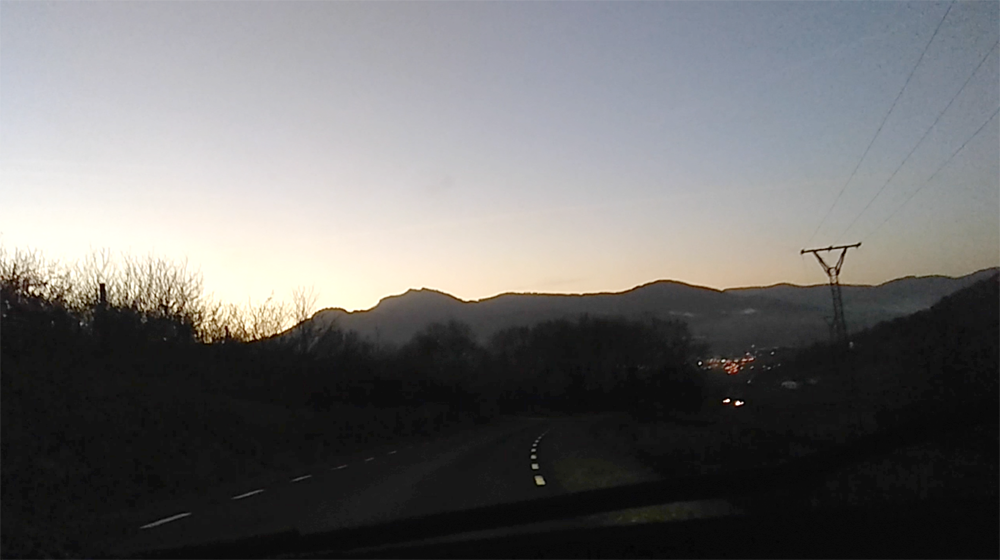
Twenty-two students from the 1st ESO of the Oriarte Institute have been asking these types of questions about film for five months, reflecting and implementing cinematographic decisions. I mean, making movies. One of the special features of the ongoing Film project is the involvement of filmmakers. And the reason is clear: passion pushes us to cinematography and it is vital to transmit it to students. So in the classroom, the film director, the teaching staff and the students, we are filmmakers. We make movies together, encouraging the view of oneself, enhancing teamwork and sharing all of it. Just like movement generates movement, because film generates cinema.
Another characteristic of the methodology is the combination of watching and making movies. From day one, students inspect the plans and sequences of some exciting directors: The exhibition includes works by David Perlov, Chantal Akerman, François Truffaut, Claire Denis, Hirokazu Coreeda, Raymond Depardon, Mercedes Álvarez, Charles Chaplin and Michel Brault, among others. These filmmakers focus on reality, characters, the world and emotions. After analyzing in depth the cinematographic decisions behind their works, each student will rotate their plans, their home, their neighborhood, their village, the closest people, the ones they find on the street... Through this new filmmaker's gaze that is being gestated, you'll pray for what you've always had in your environment, as if you saw it for the first time. Through the cinema they will know their reality again.
Passion pushes us to the movies and it is vital to transmit it to the students
Then we see and elaborate together the works that are filmed, turning the individual into a collective. Each student makes his/her contributions generously and without prejudice. Nothing is right or wrong, but behind each shoot are the decisions that you have made yourself: to whom or what has been rotated and where, at what time of day and with what kind of plane… They underpin that passion for filming their reality through the decisions of the cinema, assuming the commitment that is behind each look. The classroom of the institute has become a cinematic corner for the entire course and everyone and everyone is responsible for it, authors and spectators. Twenty-two looks together will look for the short film they have to make for the end of the course. They know that the search is going to be complex, but they're willing to make decisions on the work team.
The Cinema (h)abian initiative also has a powerful effect: students see and know daily the films of filmmakers that are not available to them. Exploration and film in its own way creates a familiar conversation between these students and filmmakers. We know that today we live loaded with images and content, but, even if it sounds like a lie, there are also movies that are hard to find, to get and to see. It is important that students also see this kind of film, as it will be one more tool in their lives. Probably, outside this initiative, these young people wouldn't be able to see the work of these filmmakers. Everyone will decide in the future whether or not they like that film and how much they want to develop that hobby. Some can become cinéphiles and, who knows, others will remain in the movies. Nothing will be imposed on them here. Each one will live and define their relationship with the cinema. Now, at least, they will be able to make a decision.
abian_2.jpg)
In France he realized the importance of introducing cinema in a public school and in 2000 the Minister of Education, Jack Lang, together with Catherine Tasca, launched the Les arts a l’école project. The arts were transferred to the school system, including cinema. And they did not understand art as a mere resource for the work of the themes, limiting their presence in school to the dates of the works of art and to the authors' lists of names, but they understood it as a creative process that manifests and makes accessible the creative decisions behind each work of art and that, therefore, becomes an essential tool in the relationships we construct with reality. Alain Bergala was then the advisor to the film section and developed a methodology that has been working for years. For him, it was important that the project be strong and flexible, to extend it to as many places as possible, and to each of them to make it their own. That is what Núria Aidelman and Laia Colell did with Cinema in curs and that is what we wanted to bring from their hand to Euskal Herria.
This first ongoing Film (h) experience will end with the academic year. We continue in the workshop and the coming months will make a short film that will be of all. Taking as a reference the works of several directors who have been seen from the beginning, taking into account the places, sounds or hours of light that the students themselves have filmed. The experiences of the months will focus on a short film made jointly. It is a film with dozens of decisions made through consensus, which will address the emotions that concern students, unite their looks and reflect the potentialities of cinema.
Although this first experience culminates in the school year, it seems that it is only the beginning. From now on, there may be about twenty young people in cars with their parents. You may feel the desire to roll a sky, and then, certainly, at that moment, you will be filmmakers.
Itoiz, udako sesioak filma estreinatu dute zinema aretoetan. Juan Carlos Perez taldekidearen hitz eta doinuak biltzen ditu Larraitz Zuazo, Zuri Goikoetxea eta Ainhoa Andrakaren filmak. Haiekin mintzatu gara Metropoli Foralean.









